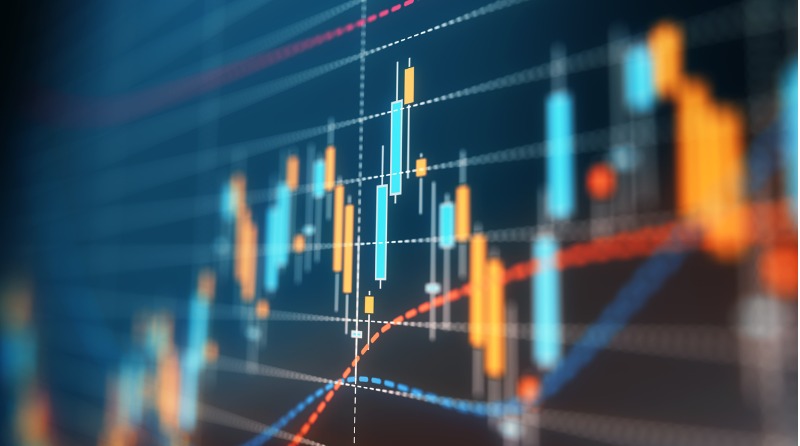Security Alert: Scam Text Messages
We’re aware that some nabtrade clients have received text messages claiming to be from [nabtrade securities], asking them to click a link to remove restrictions on their nabtrade account. Please be aware this is likely a scam. Do not click on any links in these messages. nabtrade will never ask you to click on a link via a text message to verify or unlock your account.
Understanding ETFs
Forget the acronym, think of an ETF this way. If you own an ETF that attempts to track the Australian stock market and you hear on the news on TV or read online that the stock market has gone up 1% on a certain day, you know that your ETF may have also gone up 1% in value. And if the stock market takes a dive and plunges by 5%, your ETF will have lost 5% in value.
ETFs (or Exchange Traded Funds) are designed to track market indices. An ETF that tracks the key stock market index in Australia (which is called the S&P/ASX 200) will hold the 200 stocks that make up that index in exactly the same proportion as they are weighted in the index. For example, if health care leader CSL makes up 8% of the index, an ETF tracking that index will invest close to 8% of its funds in CSL. It will also invest in the second largest company, the third largest company, the fourth largest company … right on down to the 200th largest company, in the appropriate proportion.
They are “exchange traded” because they are quoted on the Australian Stock Exchange (or ASX) and you invest by buying units on the ASX. You exit the investment by selling the units on the ASX. In all other respects, they operate just like a managed fund.
Helpful resources
ETFs vs cash - Saving your cash and investing in ETFs play different roles in an investment strategy. Learn more.
ETFs for the long game - Learn how ETFs (Exchange Traded Funds) can help you diversify and achieve your long-term goals.
All about ETFs - Here, we look to answer some of the most popular questions we receive about ETFs and index investing.
Key features
ETFs have the following key features:
- They typically track an underlying index, such as the S&P/ASX 200 or the NASDAQ 100.
- They are generally passively managed (on ‘’autopilot’’).
- Investment management fees are typically low.
- They’re traded and quoted on an exchange, such as the ASX.
- They can be bought or sold via nabtrade, and in Australia, are CHESS settled.
- They will pay distributions – often quarterly.
- Their performance should mirror the underlying index, less the management fee. Nothing more, nothing less.
- The issuers of ETFs engage ‘market makers’ to provide liquidity support on the ASX.

Who issues ETFs?
The major issuers include some of the biggest fund managers in the world, such as Vanguard, State Street (under the brand ‘SPDR’) and BlackRock (under the brand ‘iShares’). Other issuers in Australia are BetaShares, ETF Securities, VanEck and Russell Investments.
Types of ETFs
In recent years, the ETF market in Australia has expanded considerably and there is now a wide variety of ETFs available, covering most asset classes and asset sectors. You can access ETFs that cover:
- Australian shares
- Australian share market sectors (for example, financial or resource stocks)
- International shares (by region, country, sector or market)
- Fixed interest securities (government bonds, corporate bonds)
- Cash
- Credit securities (including hybrids)
- Gold and silver
- Property
- Currency (US dollar, Euro etc)
- Commodities (oil, agriculture)
There are also ETFs that give access to ethical investing, geared investing, yield investing, short investing and other themes.
Advantages and disadvantages of ETFs
What are the advantages of investing in ETFs?
The main advantage of investing in an ETF is that through a single security, you gain instant exposure to a whole marketplace or asset class. For example, if you invest in iShares IOZ (this is the ASX stock code for the iShares ETF that tracks the S&P/ASX 200 index), you gain access to the top 200 stocks on the Australian stock market. This provides immediate diversification benefits and reduces the risk of investing in individual securities.
ETFs are also low cost. The investment management fees are typically much lower than that charged by active fund managers. You know exactly what you’re getting and you can view how the ETF is invested on the issuer’s website. Most ETFs are also highly liquid, which means that there is an active market on the ASX and it is easy to buy or sell at a fair price.
What are the disadvantages?
The main disadvantage is that your investment will only perform as well as the underlying index, less the investment management fee. An ETF will never outperform. And as a managed investment, you’re also paying a management fee (something you do not pay if you invest directly). You also have no control or influence over the underlying investments that the ETF issuer makes.
Tips and traps
The top tip is to review the underlying ETF index and understand exactly what it measures. ETFs directly reflect the index they are trying to replicate or track, so if the underlying index is not right for you, you’ll end up with the wrong investment. For example, if you want to invest in global share markets and obtain broad exposure, an investment in an ETF that tracks the S&P 500 may not provide the result you are after, as this will just give exposure to the US share market. If you want exposure to US technology company shares, you may be better off investing in an ETF that tracks the NASDAQ 100, rather than one that tracks the S&P 500.
Bigger ETFs tend to have lower management fees and better liquidity, so be careful with developing ETFs and those charging higher management fees.
Because interest in ETFs is expanding rapidly, new ETFs are being introduced all the time. Some of these are designed around investment themes, and may use a constructed index rather than a recognised market index. These need to be considered carefully. Also, some ETFs invest in derivatives rather than the underlying physical commodity or security. Investment in “synthetic” ETFs should be considered carefully.
Summary
ETFs can be an easy way to invest in the share market and other asset classes. They provide instant, diversified exposure. They can be particularly useful in accessing markets or assets that aren’t particularly easy to invest in. ETFs are low cost, liquid and transparent and seek to replicate benchmark performance, not outperform it.





